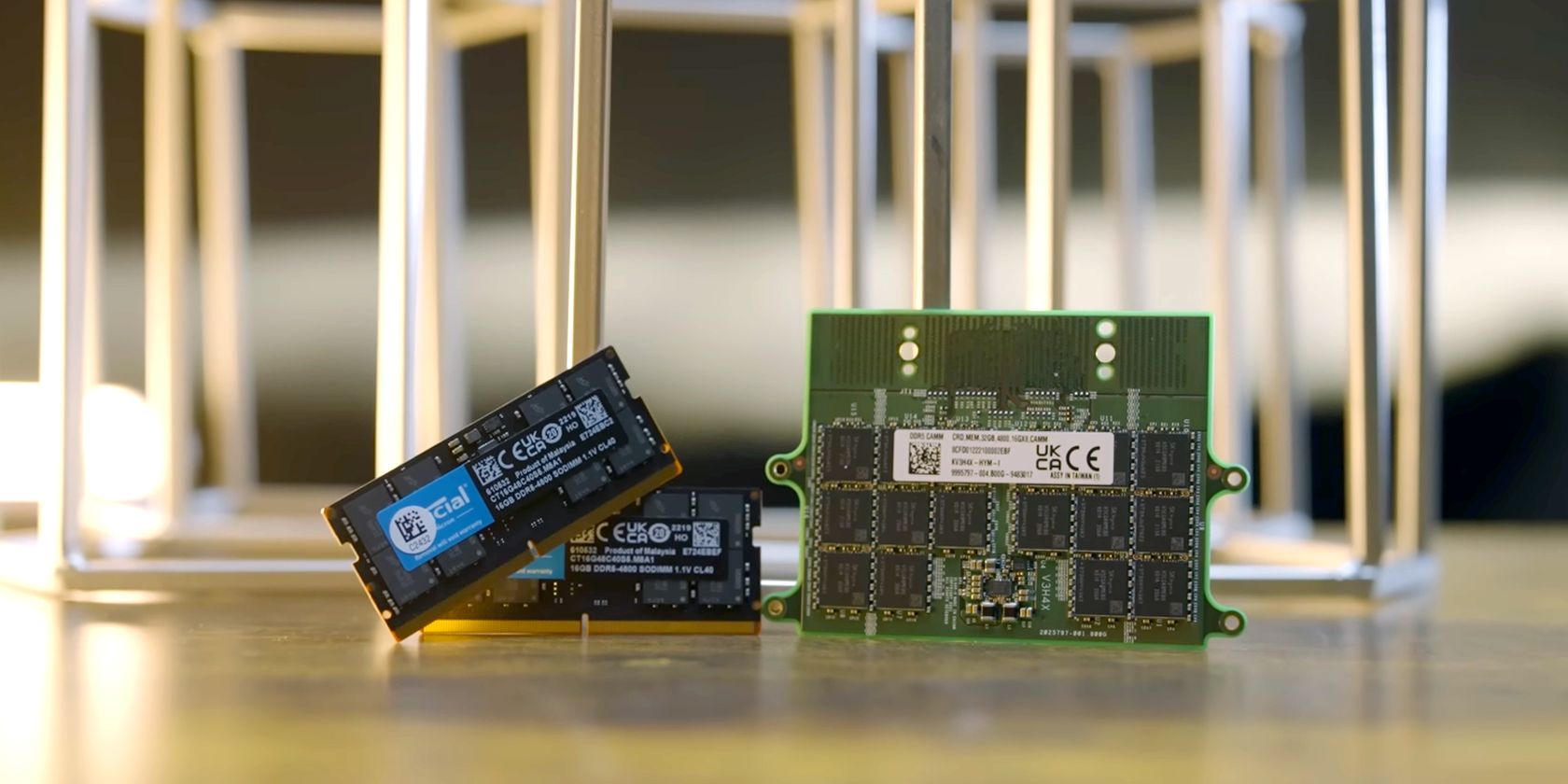Camm Memory vs DDR5: Which One Leads the Race? in today’s whirlwind world of technological advancement, innovation in memory technology is taking center stage. From data-intensive applications to cutting-edge gaming setups, the question on many tech enthusiasts’ minds is: Camm Memory vs DDR5, which one truly leads the race?
To answer that, let’s dive deep into the origins, architecture, performance, and future trajectory of these two powerful memory technologies!
A New Challenger: Understanding Camm Memory
Camm Memory, short for Compression Attached Memory Module, is a groundbreaking innovation poised to redefine how computers access and utilize memory. Unlike traditional RAM sticks that use DIMM slots, Camm Memory is designed to be attached directly to the motherboard via compression connectors. This ingenious architecture eliminates the need for bulky, vertical modules, resulting in sleeker designs and enhanced thermal management.
The unique feature of Camm Memory lies in its form factor — thin, flat, and exceptionally efficient. It’s engineered to support higher memory capacities while occupying less space. Imagine ultra-slim laptops, potent servers, and futuristic AI systems that leverage the power of high-capacity RAM without the heat issues of traditional setups.

A Stalwart Warrior: Understanding DDR5
Double Data Rate 5 (DDR5) memory represents the latest evolution in conventional RAM technology. Officially launched in 2020, DDR5 brought remarkable enhancements over its predecessor, DDR4. With doubled bandwidth, increased capacity per module, and improved power efficiency, DDR5 rapidly became the go-to solution for desktops, laptops, and enterprise systems demanding top-notch performance.
DDR5’s architecture embraces advanced error correction, superior channel efficiency, and dynamic voltage regulation. It’s robust, reliable, and mature — qualities that the tech community admires deeply. However, as powerful as it is, does DDR5 have what it takes to outshine Camm Memory in the long haul?
Architecture Comparison: How They Are Built
When scrutinizing Camm Memory vs DDR5, architecture becomes a focal point.
Camm Memory boasts an avant-garde design philosophy. It’s mounted horizontally and uses compression connectors rather than insertion pins. This radically reduces mechanical stress and allows for denser memory stacking. Furthermore, its planar layout optimizes cooling and airflow within compact chassis designs, making it a darling for next-generation laptops and high-performance compact systems.
On the other side, DDR5 retains the DIMM (Dual Inline Memory Module) structure — standing vertically in the memory slots. While the DIMM standard is battle-tested and universally compatible, it does pose limitations in terms of size and thermal management, particularly as processors and GPUs become hotter with each new generation.
Key takeaway: Camm Memory introduces a revolutionary physical format, whereas DDR5 refines a well-established standard.
Speed Showdown: Which One is Faster?
Speed is everything when it comes to memory.
Camm Memory is designed with futuristic data speeds in mind. Its compression attachment system facilitates lower latency connections and minimizes signal degradation. Initial prototypes and early commercial products suggest that Camm Memory can achieve faster read/write speeds compared to even the top-tier DDR5 modules.
Meanwhile, DDR5 boasts impressive specs of its own. With speeds starting at 4800 MT/s (mega-transfers per second) and scaling upwards to 8400 MT/s and beyond, DDR5 demolishes its predecessor DDR4 in performance. Furthermore, its dual-channel DIMM design enhances efficiency for multitasking and high-bandwidth applications.
However, industry whispers suggest that as Camm Memory vs DDR5 development advances, Camm Memory could outperform DDR5 in raw speed thanks to its lower signal noise and optimized routing.
Capacity and Scalability: Bigger is Better?
In today’s ecosystem, memory capacity is paramount.
Camm Memory is a titan in terms of scalability. The design inherently supports higher capacities within a single module compared to traditional RAM. Where DDR5 modules typically max out around 128GB per stick, Camm Memory could push these boundaries even further without demanding additional motherboard real estate.
DDR5 is no slouch either. Its advancements allow for larger memory banks than DDR4, making it ideal for servers, workstations, and gaming rigs that demand massive amounts of RAM.
But when we project five to ten years into the future, Camm Memory vs DDR5 paints a vivid picture where Camm Memory’s compact scalability could outpace DDR5’s incremental growth.
Power Efficiency: Silent Yet Mighty
Another battlefield where Camm Memory vs DDR5 clash is power consumption.
Camm Memory offers an elegant solution to power management. By reducing electrical resistance and shortening signal paths, it minimizes power draw without sacrificing performance. Less heat generation also means less reliance on fans or liquid cooling — a dream for sleek ultrabooks and energy-conscious data centers.
DDR5, while significantly more efficient than DDR4, still operates within the constraints of its vertical DIMM structure, which naturally involves slightly longer electrical paths and higher thermal loads under full stress.
For eco-friendly operations and futuristic designs, Camm Memory’s energy profile appears strikingly attractive.
Compatibility and Market Readiness
As of now, DDR5 enjoys widespread market compatibility. From consumer desktops to enterprise-grade servers, DDR5 is supported across a broad range of motherboards and chipsets. Its presence is entrenched, reliable, and trusted.
Camm Memory, on the other hand, is an emerging force. Because it requires new motherboard designs, its adoption rate is currently slower. However, several leading OEMs and technology giants are already embracing Camm Memory’s potential for their next-generation products.
The real wildcard in Camm Memory vs DDR5 is time. Given the lightning pace of technological adoption cycles, Camm Memory could become mainstream sooner than many predict.
Durability and Reliability
Long-term durability is crucial for any memory solution.
Camm Memory’s innovative connector system reduces physical wear and tear, a common issue with traditional DIMM sockets exposed to repeated insertions and removals. Its flatter design is inherently more shock-resistant, which bodes well for mobile devices, ruggedized computing, and aerospace technology.
DDR5 modules, thanks to years of refinement, offer stellar reliability under most conditions. However, they remain susceptible to pin-bend damage and socket wear, especially in mobile or frequently serviced devices.
In rugged environments and next-gen mobile applications, Camm Memory’s architecture might have a decisive edge.
Pricing: Dollars and Sense
For many, the ultimate factor in Camm Memory vs DDR5 boils down to cost.
DDR5 prices have steadily dropped since its introduction, becoming more accessible for mainstream consumers. Budget-friendly options are now widely available, and enterprise buyers can source DDR5 modules in bulk without breaking the bank.
Camm Memory, being the newer kid on the block, comes at a premium. Early adoption always entails higher costs, but as manufacturing scales and demand grows, prices are expected to stabilize and become competitive.
If initial investment is not a barrier, Camm Memory offers bleeding-edge performance and futuristic design. For cost-conscious buyers, DDR5 remains the reigning champion — at least for now.
Real-World Applications: Who Needs What?
Understanding where Camm Memory vs DDR5 makes the biggest impact helps clarify their unique roles.
- Gaming: Hardcore gamers might stick with DDR5 for now due to cost and compatibility.
- AI and Machine Learning: Camm Memory’s massive bandwidth and scalability are a perfect match for the computational appetite of AI workloads.
- Data Centers: Future-focused data centers may adopt Camm Memory to reduce energy costs and physical footprint.
- Consumer Electronics: Sleek laptops and tablets stand to benefit enormously from Camm Memory’s slim form and low thermal output.
Each technology shines in its respective niche, but Camm Memory’s versatility hints at broader horizons.
The Verdict: Who Truly Leads the Race?
Evaluating Camm Memory vs DDR5 is akin to comparing an elite sprinter with a seasoned marathon runner.
DDR5 stands tall today, offering excellent performance, affordability, and widespread support. It’s the natural choice for most current-generation builds and upgrades.
Camm Memory, however, embodies the future. Its innovative design, high scalability, lower energy demands, and rugged durability position it as the heir apparent for the next wave of computing demands.
In the immediate term, DDR5 holds the crown. Yet as Camm Memory technology matures and adoption spreads, it could usurp DDR5 and redefine what we expect from computer memory entirely.
Final Thoughts: Choosing Between Titans
For those embarking on new projects, the decision between Camm Memory vs DDR5 should be based on specific needs:
- Need immediate compatibility and affordability? DDR5 is your ally.
- Looking toward future-proofing, space-saving, and elite performance? Keep a sharp eye on Camm Memory.
The race is thrilling, the stakes are monumental, and memory technology has never been more exciting. Whichever you choose, both Camm Memory and DDR5 promise exhilarating performance for years to come.





More Stories
Tesla’s AI Hiring Shift: Fewer Jobs for Humans?
Upskill Now: Survive and Thrive in the AI Job Market
Retail Revolution: AI Innovation in Action